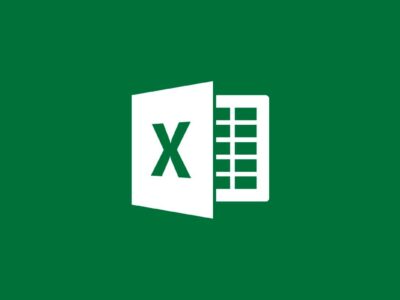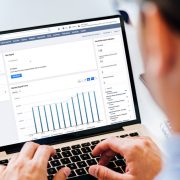These days, everyone has a website; companies, local businesses, and international corporations all use websites to attract new customers and/or build a brand reputation. With millions of active websites out there, it’s the smallest of details that usually make the most difference.
Today we’ll talk about website loading times.
According to Hubspot’s blog, one second of extra loading time can drop the conversion rates by as much as 4.42%. In other words: Fast loading speeds can have a prominent effect on conversion rates and customer satisfaction.
Let’s look at how website loading speed affects your website performance and conversions.
Website Loading Speed Explained
The rising number of websites in the past decade has created problems for search engines such as Google.
Private users and all kinds of organizations kept creating new websites, many of which were missing useful content and other features you expect from a website. That’s why Google started updating its algorithms to try and eliminate fake websites and domains.
Today, Google uses over 200 different factors to rank up a website, and the loading speed is one of them.
Slow page loading speed is one of the main reasons for low site traffic and a negative user experience.
Today, when most information is available in a quick Google search, no one wants to spend 10, 15, or 20 seconds waiting for a site to load.
If you’re running a business website and if you use it to sell products and services online, you should do everything possible to optimize your page loading speed. Here’s why:
Why Is Loading Speed a Factor In Website Performance?
https://pixabay.com/vectors/internet-speed-test-high-download-5402033/
Google introduced website loading speed as a factor in Google ads in 2018. Based on this update, if an advertised landing page takes beyond a certain number of seconds to load, it gets demoted in search.
Why?
Because Google saw that the longer that page would take to load, the lower its conversion rates would be.
Most studies found that users are willing to wait for 5 seconds, after which most of them bounce and go somewhere else.
A slow website can, therefore, have a negative effect on user behavior.
Since most people browse the internet using a mobile phone, a site without a fully responsive design usually has much lower results than optimized websites.
Moreover, 53% of mobile users abandon a site if it takes longer than 3 seconds to load.
Digital Silk, recognized as the best website design company, claims that optimizing the website speed should be one of the key components in today’s website planning, development and maintenance as this affects both a site’s SEO and conversions.
What Impacts The Page Loading Speed?
A website’s loading speed depends on a few factors such as:
1. Page Features
The more features and resources a website uses, the slower it gets.
If you populate your site with a ton of videos, CSS files, large images, and other elements, you run the risk of overloading your website and making struggle to process commands .
If you want to provide your visitors with a rich portfolio of features, be mindful of the potential tradeoff.
To err on the safe side, strip your site of all heavy features to make it as light as possible.
Reduce the size of all files and avoid complicated features and JavaScript functions.
While web design trends keep evolving and new features such as moving backgrounds and animations could provide more pizazz, a single second of loading delay they may cause will hurt your bottom line.
2. Networking Capabilities
Creating a lightweight website won’t help much if you operate it from a slow network.
The ISP you choose also plays an important role in the overall website loading speed.
Other factors that may harm page loading speed is the use of outdated connections such as 3G and 4G. However, with a good developer team, you can overcome these hurdles.
It’s not a bad idea to compress files and include minification to boost the page loading speeds.
3. Host Location
If you choose a host located far from your geo-location, you can expect slower loading speeds.
Here’s why:
If you visit a website hosted on a server that is on the other side of the world, the latency of connection will be lower than if the server were physically closer.
There are ways to minimize the effect of geo-distance on user-facing website loading speed such as using CDN, but it is generally recommended to host a website in a country where your biggest user base is.
How Slow Website Loading Speeds Lower Your Conversion Rates?
Now we are ready to discuss the key question of this article: How exactly do longer page loading speeds impact the conversion rates?
Here are the three main factors:
1. Increased Website Abandonment Rates
According to one of Google’s studies on user behavior, 53% of website visitors abandon the site if it takes more than 3 seconds to load.
Things get even worse with every extra second of loading time.
A 5-second difference increases website abandonment by as much as 106%, which will undoubtedly damage conversion rates.
If your website takes more than 10 seconds to load, the bounce rate probability reaches a worrying 100%. In other words, the longer your website takes to load, the more prospects it is losing.
2. Huge Drop in Sales
As a consequence of the increased website abandonment rate, you can expect lower sales than those of your competitors (provided their sites are optimized).
Only a few prospects will have enough patience to get to the end of the checkout process, but even if they do, they will likely leave negative reviews about the experience.
https://pixabay.com/vectors/store-online-ecommerce-shopping-4156934/
Chances are that they won’t come back to make another purchase, which will quickly prove unsustainable for your business.
Most eCommerce platforms depend on returning customers, which are responsible for about half of all sales.
If your customer doesn’t want to return to make another purchase, you will practically lose 50% of your potential conversions.
However, if you manage to optimize your site and boost the loading speeds, every second you shave off will improve your conversion rates by 2%.
3. Negative Effects on SEO
You could have the best SEO on your website, but if it takes too long to load, Google won’t give your site the coveted spots in search.
The reason for this is the rising number of mobile users.
Today, about 54% of all online traffic originates from mobile devices, so you must boost your site’s loading speeds as much as possible. Slow site loading speeds mean less traffic, which means fewer conversions. It’s as simple as that.
The Most Important Performance Metrics to Consider
As mentioned earlier, Google ranks websites by scanning over 200 different factors. Of course, not all of them matter the same, and some are far more important than others.
Here are the primary metrics you should keep in mind:
1. Page Load Time
Page load time tells you how long your page takes to fully load in a browser. The more HTTP resources you use, the more time your site will take to load.
2. TTFB or Time to First Byte
TTFB tells you how much time your page takes between sending a request to the server and loading the first byte. Even though it’s not as impactful as page loading speed, it can still harm performance and SEO.
3. Page Size
We addressed this earlier. If you build your page from many different large files, it will take much longer to load. Mobile users will have to wait longer to access information, which will decrease conversion rates.
4. RTT or Round Trip Time
RTT tells you how much time a request takes to reach the server and provide a response. Naturally, you want to minimize this metric as much as possible to make your site feel faster and more responsive.
What Is The Ideal Page Loading Speed?
Now that you understand what factors impact website page loading speeds, you should improve your site to make it load faster.
But what is the ideal page loading speed?
According to Google, every page should fully load in under 5 seconds on older networks.
However, since the abandonment rate increases by up to 53%, if a page takes more than 3 seconds to load, you have to do everything you can to increase the lading speeds as much as possible. In other words, the ideal website loading speed in 2021 is less than 3 seconds.
The Bottom Line
Your site’s performance has a massive impact on conversion rates.
If you’re having a hard time optimizing your website, you can always contact Digital Silk, the masters of web design in New York to get some expert tips.
The key thing to remember is that you want to keep your website as light as possible.
Doing so will improve page loading speeds and have a positive impact on conversion rates. As long as you keep the loading speed around 3 seconds, you’ll have the best chances of making a sale.
Author bio
Travis Dillard is a business consultant and an organizational psychologist based in Arlington, Texas. Passionate about marketing, social networks, and business in general. In his spare time, he writes a lot about new business strategies and digital marketing for DigitalStrategyOne.












Comments